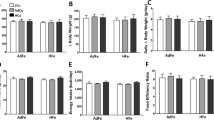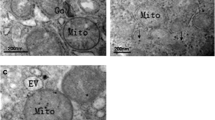Abstract
The feeding of diets enriched with ascorbic acid (10 g/kg) to rats has previously been shown to lower plasma and liver copper concentrations. The present studies corroborate this. We hypothesized that ascorbic acid initially reduces copper absorption, this effect being masked later by the stimulatory effect on copper absorption of the impaired copper status. We also hypothesized that the impaired copper status as induced by ascorbic acid feeding is followed by a diminished biliary excretion of copper in an attempt to preserve copper homeostasis. Our hypotheses are supported by the present studies. Ascorbic acid feeding initially reduced apparent copper absorption, and in the course of the experiment this effect tended to turn over into a stimulatory effect. Copper deficiency, as induced by feeding a diet containing 1 mg Cu/kg instead of 5 mg Cu/kg, systematically increased copper absorption. Biliary excretion of copper in rats given ascorbic acid was unaffected initialy but became depressed after prolonged ascorbic acid feeding. A similar time course was seen for fecal endogenous copper excretion that was calculated as the difference between true and apparent copper absorption. Copper deficiency systematically reduced biliary copper excretion and fecal endogenous copper loss.
Similar content being viewed by others
References
G. J. Van den Berg and A. C. Beynen,Br. J. Nutr. 68, 701 (1992).
D. Van Campen and E Gross,J. Nutr. 95, 617 (1968).
M. A. Johnson,J. Nutr. 116, 802 (1986).
M. A. Johnson and C. L. Murphy,Am. J. Clin. Nutr. 47, 96 (1988).
G. J. Van den Berg, J. P. Van Wouwe and A. C. Beynen,Biol. Trace Elem. Res. 23, 165 (1990).
P. E. Johnson and D.-Y. Lee,J. Trace Elem. Exp. Med. 1, 129 (1988).
M. A. Stuart and P. E. Johnson,J. Nutr. 116, 1028 (1986).
G. J. Van den Berg, H. Th Wolterbeek, J. J. M. de Goeij, and A. C. Beynen,Lab. Animals 28 (1994).
D. A. Heth and W. G. Hoekstra,J. Nutr. 85, 367 (1965).
C. A. Owen and J. B. Hazelrig,Am. J. Physiol. 215, 334 (1968).
National Research Council (1978) Nutrient Requirements of Laboratory Animals, Washington DC: National Academy of Sciences.
A. A. Van Barneveld and C. J. A. Van den Hamer,Nutr. Rep. Int. 29, 173 (1984).
R. J. Vonk, A. B. D. van Doorn, and J. Strubbe,Clin. Sci. Mol. Med. 55, 253 (1978).
Ch. Fleck and A. Barth,Exp. Pathol. 39, 175 (1990).
F. W. Sunderman and S. Nomoto Jr.Clin. Chem. 16, 903 (1970).
M. Yoshiura and K. Iriyama,J. Liquid Chrom. 9, 177 (1986).
M. T. Parviainen, K. Nyyssonen, I. M. Penttila, K. Seppanen, R. Rauramaa, J. T. S. Salonen and C. G. Gref,J. Liquid. Chrom. 9, 2185 (1986).
A. J. Speek, J. Schrijver, and W. H. P. Schreurs,J. Chrom. 305, 53 (1984).
M. C. Lindner and M. Roboz,Am. J. Physiol. 251, E551 (1986).
SPSS/PC+ V2.0 Base Manual (1988) SPSS Inc., Chicago.
C. A. Owen,Am. J. Physiol. 207, 1203 (1964).
P. Farrer and S. P. Mistilis,Birth Defects Original Articles Series 49, 237 (1968).
Author information
Authors and Affiliations
Rights and permissions
About this article
Cite this article
Van den Berg, G.J., Yu, S., Lemmens, A.G. et al. Ascorbic acid feeding of rats reduces copper absorption, causing impaired copper status and depressed biliary copper excretion. Biol Trace Elem Res 41, 47–58 (1994). https://doi.org/10.1007/BF02917216
Received:
Accepted:
Issue Date:
DOI: https://doi.org/10.1007/BF02917216




